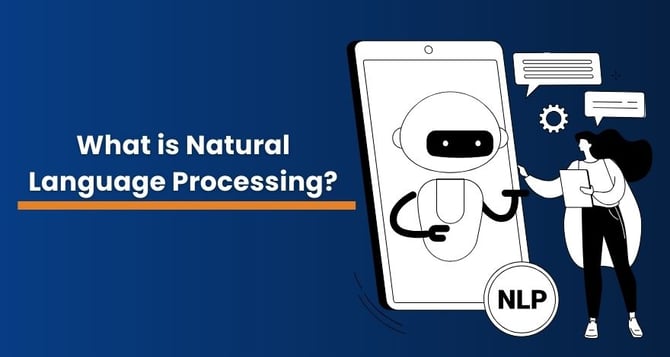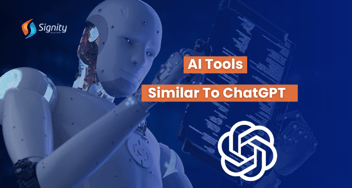What is Natural Language Processing?
Embark on a transformative journey with Natural Language Processing (NLP), steering the $112.28 billion market. From sentiment analysis to innovative adaptations, NLP reshapes text interaction, promising a dynamic future of seamless communication and technological evolution.

Unlock the power of Natural Language Processing and revolutionize the way you understand and interact with text data.
What is Natural Language Processing?
Natural Language Processing (NLP) is a branch of computer science and artificial intelligence that aims to help machines understand and interpret human language in the form of text or speech data.
NLP combines various techniques from linguistics, computer science, and machine learning to process and analyze text data.
To understand the basics of NLP, it is important to grasp the concepts of tokenization, part-of-speech tagging, syntactic parsing, and semantic analysis.
- Tokenization involves breaking down a text into smaller units, such as words or sentences.
- Part-of-speech tagging assigns grammatical categories to each token, such as nouns, verbs, or adjectives.
- Syntactic parsing determines the grammatical structure of a sentence.
- Semantic analysis focuses on understanding the meaning of words and sentences.
By understanding the basics of NLP, you will be equipped with the necessary knowledge to explore its applications and implement essential techniques and algorithms.
Natural Language Processing (NLP) Tasks
Natural Language Processing (NLP) involves various tasks that enable computers to understand and interpret human language. Some common NLP tasks include:
-
Part-of-speech tagging: Think of it as assigning roles to words in a sentence, like nouns or verbs. It helps computers make sense of the language's structure.
-
Sentiment analysis: This is like technology decoding emotions from customer feedback or written text, giving a sort of emotional intelligence check.
-
Language translation: NLP makes translation between languages a breeze, promoting smooth global communication.
-
Chatbots and automated customer service: Thanks to NLP, interacting with chatbots or automated systems feels more like talking to a human, enhancing user experience.
-
Text summarization: NLP's cool feature that condenses long text into quick summaries, making it easier to grasp information quickly.
-
Named entity recognition (NER): NLP acts like a superhero, sorting through text to identify the names of people, organizations, locations, and dates.
-
Speech recognition: This transforms spoken words into text, making voice commands, transcriptions, and voice-operated systems possible.
-
Question answering: NLP systems understand and respond to questions in natural language, a crucial part of virtual assistants and search engines.
-
Topic modeling: NLP techniques automatically spot topics in a pile of documents, making organization and understanding much smoother.
-
Language generation: NLP models get creative, producing human-like text for language translation, chatbots, and content generation across various applications.
Revolutionize Your Text: Where Stats Meet Innovation
Unlock the Power of Natural Language Processing with Our AI, Boasting a 40% Accuracy Surge
Natural Language Processing (NLP) Benefits
In the realm of technology, Natural Language Processing (NLP) emerges as a versatile tool, offering a multitude of benefits to both businesses and consumers. From swift language translation to extracting valuable insights through sentiment analysis, NLP is reshaping how we interact with information.
-
Communication Mastery: NLP decodes spoken words, text messages, and social media buzz, making it a versatile language wizard.
-
Customer Bliss: NLP analyzes feedback, ensuring businesses not only meet but exceed customer expectations, fostering positive experiences.
-
Efficiency Through Automation: NLP automates tasks like customer interactions and data analysis, saving time and resources for smarter operations.
-
Audience Insights: By dissecting social media, surveys, and reviews, NLP gives businesses a clear picture of what their audience truly desires.
-
Rapid Adaptation: NLP ensures swift tasks like language translation and sentiment analysis, allowing businesses to adapt quickly to changing scenarios.
-
Accessible Information: Breaking tech barriers, NLP makes valuable insights available across platforms, democratizing information for everyone.
-
Data-Driven Decisions: NLP provides businesses with actionable insights, guiding strategic decisions and future plans based on real data.
As NLP evolves, it's not just a tool; it's a companion in enriching digital experiences and making language understanding work seamlessly for all.
Exploring the Applications of Natural Language Processing
Natural Language Processing (NLP) transforms industries with its versatile applications. In information retrieval, NLP sifts through unstructured text data, enhancing search engines to deliver precise and meaningful results by understanding user queries.
Another important application of NLP is sentiment analysis, which involves determining the sentiment or emotion expressed in a piece of text. This is useful in social media analysis, customer feedback analysis, and brand monitoring. NLP is also used in machine translation, speech recognition, chatbots, and text generation.
By exploring the applications of NLP, you will discover how it can be leveraged to solve real-world problems and improve various processes.
Essential Techniques and Algorithms in Natural Language Processing
In the realm of Natural Language Processing (NLP), understanding key techniques and algorithms is pivotal for building effective solutions. Here's a glimpse into the essentials:
-
Named Entity Recognition (NER):
- What it Does: Identifies and categorizes named entities like people, organizations, or locations in text.
- Why it Matters: Essential for tasks like information extraction and constructing knowledge graphs.
-
Sentiment Analysis:
- What it Does: Classifies text sentiment as positive, negative, or neutral.
- Why it Matters: Utilizes machine learning algorithms like support vector machines or recurrent neural networks for gauging sentiment.
-
Text Classification:
- What it Does: Assigns predefined categories to text based on content.
- Why it Matters: Fundamental for organizing and sorting large volumes of textual data.
-
Topic Modeling:
- What it Does: Identifies main topics within a collection of documents.
- Why it Matters: Enables efficient categorization and understanding of diverse textual content.
-
Word Embeddings:
- What it Does: Represents words as vectors to capture semantic relationships.
- Why it Matters: Enhances language understanding by preserving contextual meaning.
-
Language Generation:
- What it Does: Creates human-like text through NLP models.
- Why it Matters: Vital for applications like chatbots, content creation, and language translation.
Natural Language Processing (NLP) Use Cases
Natural Language Processing (NLP) transcends its technical roots, finding practical applications across various industries. Here are some compelling NLP use cases that showcase its versatility:
-
Sentiment Analysis:
- Application: Social Media Monitoring, Customer Feedback Analysis
- How it Works: NLP interprets the sentiment expressed in texts, helping businesses gauge public opinion and customer satisfaction.
-
Language Translation:
- Application: Global Communication, Cross-Border Collaboration
- How it Works: NLP facilitates seamless translation between languages, breaking down language barriers for effective communication.
-
Text Summarization:
- Application: News Aggregation, Document Summaries
- How it Works: NLP condenses lengthy texts into concise summaries, aiding in quick information retrieval and understanding.
-
Named Entity Recognition (NER):
- Application: Information Extraction, Data Organization
- How it Works: NLP identifies and classifies named entities like names of people, organizations, locations, and dates in a text.
-
Speech Recognition:
- Application: Voice Commands, Transcriptions
- How it Works: NLP converts spoken language into text, enabling voice-operated systems and accurate transcriptions.
-
Chatbots and Virtual Assistants:
- Application: Customer Service, Automated Interactions
- How it Works: NLP powers chatbots to understand and respond to user queries, providing efficient and personalized interactions.
-
Topic Modeling:
- Application: Document Organization, Content Categorization
- How it Works: NLP identifies topics present in a collection of documents, aiding in efficient organization and understanding.
-
Language Generation:
- Application: Chatbots, Content Creation
- How it Works: NLP models generate human-like text, enabling applications like chat responses and content generation.
-
Clinical Documentation in Healthcare:
- Application: Electronic Health Records (EHR), Medical Coding
- How it Works: NLP assists in processing and understanding medical texts, improving efficiency in healthcare documentation.
-
Fraud Detection in Finance:
- Application: Transaction Monitoring, Anomaly Detection
- How it Works: NLP contributes to identifying patterns and anomalies in financial texts, enhancing fraud detection capabilities.
Overcoming Challenges in Natural Language Processing
While Natural Language Processing (NLP) has witnessed notable progress, several challenges persist for researchers and practitioners:
-
Ambiguity in Human Language:
- Challenge: Words and sentences often carry multiple meanings, posing a challenge in understanding the intended context.
- Impact: Complicates accurate interpretation of language, especially in diverse contexts.
-
Lack of Labeled Training Data:
- Challenge: Supervised machine learning relies on labeled data, but labeling extensive text datasets is time-consuming and expensive.
- Response: Unsupervised and semi-supervised learning techniques in NLP seek to address this limitation.
-
Noisy and Incomplete Data:
- Challenge: Dealing with data that is incomplete or contains irrelevant information.
- Impact: Affects the reliability and performance of NLP systems, demanding robust data cleaning processes.
-
Language Variations and Dialects:
- Challenge: Coping with diverse linguistic expressions and regional language variations.
- Impact: Necessitates adaptability in NLP models to process and understand varied language structures effectively.
-
Ethical Considerations:
- Challenge: Addressing biases and privacy concerns in NLP applications.
- Response: Ongoing research focuses on developing ethical frameworks and algorithms to ensure fair and responsible use.
Overcoming these challenges necessitates continuous innovation and research in the dynamic field of NLP. As technology evolves, finding solutions to these hurdles will be integral to unleashing the full potential of natural language understanding.
Natural Language Processing Tools
Some of the popular natural language processing (NLP) tools and platforms include:
Gensim: A high-speed, scalable Python library that focuses on tasks such as topic modeling and text similarity recognition.
SpaCy: An open-source NLP processing library that provides efficient linguistic annotations for text data.
IBM Watson: A comprehensive AI platform that offers NLP capabilities, including speech recognition and language understanding.
Natural Language Toolkit (NLTK): A popular open-source platform that provides various text-processing libraries, making it suitable for educators, students, and researchers.
MonkeyLearn: An NLP-powered platform that offers tools for text analysis, including sentiment analysis and named entity recognition.
Amazon Comprehend: A service that provides NLP capabilities for tasks such as language detection, sentiment analysis, and keyphrase extraction.
Google Cloud NLP API: A cloud-based service that offers NLP capabilities, including entity recognition, sentiment analysis, and syntax analysis.
These tools and services cover a wide range of NLP tasks and are used in various industries for tasks such as sentiment analysis, language translation, and text classification.
Future Trends and Innovations in Natural Language Processing
Natural Language Processing (NLP): Global Market Analysis and Insights
The global Natural Language Processing (NLP) market size is projected to grow from $24.10 billion in 2023 to $112.28 billion by 2030, demonstrating a compound annual growth rate (CAGR) of 24.6% during this forecast period 2023 to 2030.
Key trends shaping the future of NLP include:
-
Integration with Emerging Technologies:
- What's Happening: NLP is aligning with technologies like machine learning, deep learning, and natural language generation.
- Why it Matters: This integration enhances the sophistication and capabilities of NLP systems, unlocking new realms of functionality.
-
Multilingual NLP Focus:
- What's Happening: NLP techniques are expanding to cover multiple languages.
- Why it Matters: In our globalized world, addressing language barriers becomes crucial. Challenges include language identification, translation, and cross-lingual information retrieval.
-
Explainable and Interpretable NLP Models:
- What's Happening: There's a rising interest in making NLP models more explainable and interpretable.
- Why it Matters: As NLP systems gain complexity, understanding how they make decisions and providing explanations becomes essential, especially in fields like healthcare and law.
Unleash the Power of Natural Language Processing
Dive into the world of Generative AI. Visit our page for a journey through advanced language technology!
In conclusion, NLP is a crucial and rapidly evolving field that plays a pivotal role in enabling human-computer interaction, automating language-based tasks, and unlocking the potential of unstructured textual data.
As NLP continues to progress, we can expect to see increasingly sophisticated language understanding and generation capabilities, leading to innovative applications that enhance user experiences and drive efficiency across various domains.














